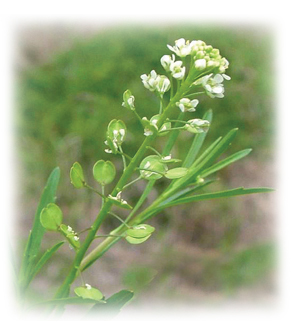Pepper Grass, pepperweed,peppercress, poor man’s pepper, lépidie des champs
|
|
| Lepidium virginicum
Brassicaceae
|
|
|
Legend and Lore In the Mustard family, lepidium from the Latin; Little-scale for the fruit, virginicum from Virginia. As the name suggest full of spicy pepper flavor. In Colonial times women used this potherb to season their dishes instead of peppercorns; hence the name Poor Man’s Pepper. In Cajun and Creole cuisine folklore holds that an even number used in the gumbo is unluckyseven is the usual number of greens including leafy mustard, Napa cabbage, collards, spinach, flat leaf parsley, beet tops and peppergrass. First Nations used the plant to treat scurvy, diabetes, TB and topically to treat poison ivy. There is also a reference to feeding the herb to sick chickens as part of their feed to encourag egg laying.
|
|
|
In the Garden Pepper grass reproduces by seed only, common in pastures, roadsides, edges of woods and waste areas. A basal rosette with lanceolate leaves 2-15cm in length broader near the tip, small white flowers from June to November, circular pods that are slightly notched at the tips. |
|



